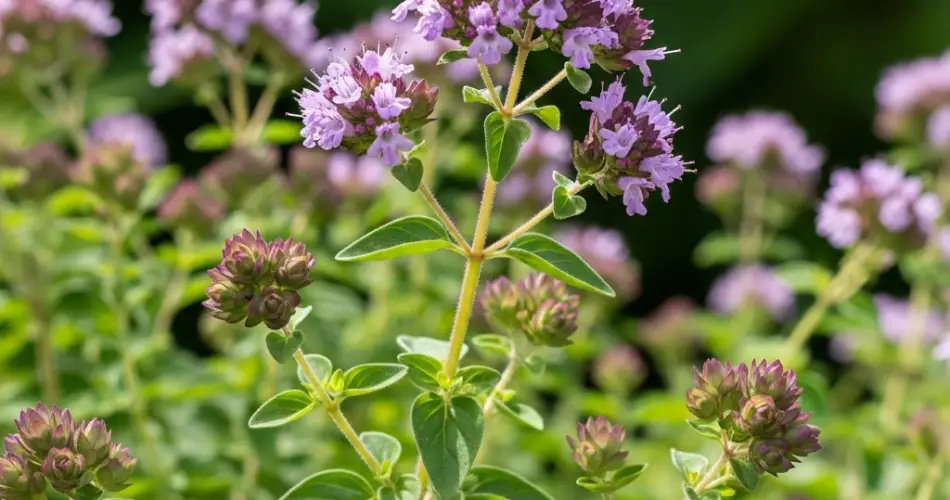Oregano is a hardy, aromatic herb prized in both culinary and medicinal applications. While it’s relatively low-maintenance and pest-resistant compared to other herbs, it’s not entirely immune to insect infestations or fungal problems. Pests can stress the plant, reduce its vigor, and compromise flavor quality. The good news is that you don’t need to reach for synthetic chemicals to protect your oregano. There are effective organic strategies that can keep your plants healthy and thriving. Here’s a comprehensive guide on controlling pests on oregano using safe, natural methods.
Common Pests That Affect Oregano
Before jumping into solutions, it’s important to identify the most common pests that target oregano. These include:
-
Aphids: Tiny, soft-bodied insects that cluster on new growth and the undersides of leaves. They suck sap, causing distorted leaves and stunted growth.
-
Spider mites: Microscopic pests that thrive in dry conditions. They create fine webbing and cause speckled, yellowing leaves.
-
Whiteflies: Small, winged insects that feed on the undersides of leaves, leaving behind sticky honeydew that attracts mold.
-
Thrips: Slender insects that feed on oregano leaves and flowers, causing silver streaks or discoloration.
-
Flea beetles: Small beetles that chew tiny holes in leaves, making plants appear pitted or lace-like.
-
Leaf miners: Larvae that tunnel through leaves, leaving winding trails.
Organic Methods for Pest Prevention
A big part of organic pest control is prevention. Here are some ways to discourage pests from targeting your oregano in the first place:
1. Healthy Soil and Proper Spacing
Pests tend to attack stressed plants. Make sure your oregano is growing in well-draining soil with plenty of sunlight. Avoid overcrowding plants so that air can circulate freely, reducing humidity levels that attract pests like spider mites and fungal diseases.
2. Rotate Your Herbs
If you’re growing oregano in garden beds, rotate where you plant it each season. This helps break the lifecycle of soil-borne pests and diseases that may build up in one location.
3. Practice Good Garden Hygiene
Remove dead leaves and weeds around your oregano, which can harbor insects and fungal spores. At the end of each growing season, clear out old plant material to reduce overwintering pest populations.
4. Encourage Beneficial Insects
Lacewings, ladybugs, and parasitic wasps naturally control pest populations like aphids and whiteflies. Planting flowers like dill, fennel, and yarrow near oregano can attract these helpful insects to your garden.
Organic Solutions for Common Pests
If pests still manage to invade, here are proven organic remedies that are safe for oregano and other herbs.
1. Neem Oil Spray
Neem oil is a natural insecticide that disrupts the feeding and reproduction of many soft-bodied insects. Mix 1 teaspoon of neem oil and a few drops of mild dish soap with 1 quart of water. Spray the solution on affected leaves every 5–7 days until pests are under control. Avoid spraying during the hottest part of the day to prevent leaf burn.
2. Insecticidal Soap
Insecticidal soaps work by breaking down the outer coating of soft-bodied insects like aphids, thrips, and mites. You can buy commercial insecticidal soap or make your own by mixing 1 tablespoon of gentle liquid soap (not detergent) in a quart of water. Spray directly on pests, repeating every few days as needed.
3. Garlic or Chili Spray
Both garlic and chili have natural insect-repelling properties. To make a spray:
-
Blend a head of garlic or a few hot chilies with 2 cups of water.
-
Let it steep overnight.
-
Strain the liquid and dilute it with another 2 cups of water.
-
Spray the mixture on your oregano, especially under leaves.
This is particularly effective for whiteflies and aphids.
4. Diatomaceous Earth (DE)
Sprinkle food-grade diatomaceous earth around the base of the oregano plant or directly on leaves to combat crawling insects like flea beetles. DE works by damaging the exoskeletons of insects, causing dehydration. Reapply after rain or watering.
5. Manual Removal
For small infestations, removing pests by hand is effective. Use a gentle stream of water to knock off aphids and mites. You can also pick off affected leaves or squish pests like beetles by hand.
Companion Planting for Natural Defense
Oregano itself is often used as a companion plant because its strong scent repels many pests. But when oregano is under attack, consider adding other protective companions nearby:
-
Basil: Helps repel thrips and aphids.
-
Marigold: Known for deterring whiteflies and nematodes.
-
Chives: Their scent discourages aphids and mites.
Monitoring and Consistency
Organic pest control requires regular observation. Check your oregano every few days, especially the undersides of leaves where pests often hide. Look for signs like sticky residue, discolored foliage, or visible pests. Early detection allows you to act before the problem becomes severe.
Final Thoughts
Oregano is generally resilient, but pest problems can arise, especially in hot, dry conditions or crowded gardens. With regular care, observation, and the use of organic techniques like neem oil, insecticidal soaps, and companion planting, you can keep your oregano plants healthy and pest-free without resorting to chemicals. These methods not only protect your herbs but also support a thriving, eco-friendly garden.



